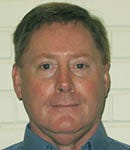How One Midsize Hauler Has Positioned Itself for Continued Growth
Santek Waste Services has used funds raised in a December 2015 recapitalization to fuel its growth strategy.
While solid waste companies have come and gone over the past three decades, Santek Waste Services Inc., has come and grown.
The Cleveland, Tenn.-based company began in 1987 with CEO Kenneth Higgins and current Chief Business Development Officer Eddie Caylor as principals of a privatization business for municipal landfills. While still in the privatization business, they’ve grown Santek into a major mid-sized and vertically integrated solid waste management company—and they aren’t finished.
In December 2015, Santek completed a $153 million recapitalization of the company to provide for growth opportunities. Since then, they’ve had several acquisitions.
In June, the company, which at that time of the recapitalization estimated its 2016 revenues at $107 million, acquired all of the residential waste collection customers of Blount County, Ala. through when it bought Hayden,Ala.-based Blount Waste Services Inc.
In August, Santek purchased all of the assets of Riverside Waste Services in Splendora, Texas, which included all of its residential, commercial and industrial customers. Caylor says the purchases of these companies enhance Santek's growing presence in the Northeast Houston and Birmingham markets.
Santek COO Tim Watts says the acquisitions mirror those of national solid waste companies by entering new markets with privatization efforts and expanding those markets and Santek’s overall footprint. More acquisitions and growth are in the works. Long term, the company expects hauling companies will account for 70 percent of revenue going forward with landfills making up just 30 percent.
“If you’re going to be in the landfill business, you need to have the hauling presence to ensure that you continue to have volume and volume growth,” says Watts. “We’re in a business where you can’t rely on third-party haulers to bring the volume to you. We wanted to be more in control of our own destiny as a company, and by doing that we’re going from basically a landfill-space-driven company in the past to a vertically integrated company.”
Today, Santek manages disposal facilities in a nine-state region. In addition to its municipal landfill partnerships, the company also provides residential commercial and industrial trash pick up to complement its landfill efforts.
Waste360 spoke with Caylor and Watts to learn more about the company’s plan for continued growth and what the future might hold for Santek.
Waste360: Santek has been slowly and steadily expanding. What can you tell us about your strategy for growth?
 Tim Watts: We really have migrated from strictly a privatization company to a vertically integrated solid waste company, which really, if you look at us, in those eight states, we are really primarily in the southeast.
Tim Watts: We really have migrated from strictly a privatization company to a vertically integrated solid waste company, which really, if you look at us, in those eight states, we are really primarily in the southeast.
We go as far north as Ohio and as far west as Texas. We have hauling operations in five states. Our growth strategy is to continue to vertically integrate all of our disposal facilities. So we’re doing that by acquiring hauling acquisitions, to support our disposal capacity. If you look at it, each hauling acquisition gives us a platform for growth in each market.
That platform concentrates on the commercial, industrial and residential sectors. A large component of our growth is municipal contract growth, as well. We’ve been very successful with that over the last two years.
We’ve acquired a very large municipal contract in the Birmingham, Ala., marketplace with the city of Hoover Ala. and Gardendale, Ala., both of which we took from Republic Services. In addition to that, we started another municipal contract in Birmingham, Ala, marketplace in the city of Trussville, Ala. We will be replacing Advanced Disposal as the service provider there.
Waste360: Talk about the growth of the company through acquisition.
Tim Watts: We are continuing to look at privatization, hauling acquisitions and municipal contract growth. Those are the three avenues of growth for our company. We’ve been very successful with that over the last two years.
We started hauling acquisitions full bore really in December of last year when we acquired Waste Transport. That acquisition performed exactly how I thought it would. Earlier this year, in June, we closed on an acquisition in the Birmingham marketplace, Blount Lake, which began as a residential contract that increased our hauling presence ... actually expanded us north just slightly. We closed on Riverside Waste on Aug. 1.
That acquisition is in Splendora, Texas, which is actually just northeast of Houston - about 45 minutes. That really is a platform acquisition that enables us to reach that northeastern marketplace there.
Waste360: Why is that particular location important to Santek?
Tim Watts: We have disposal capacity in that market, and we have been a very small hauler out there for about 10 years. We are now looking to acquire additional assets in that marketplace.
This will come out in the coming months, but we have several additional acquisitions in the pipeline that we look forward to closing, some as soon as the end of this month.
Waste360: Can you talk about your business since the recapitalization efforts in December and how it has impacted growth?
Tim Watts: We recapitalized for this exact reason. For strategic, aggressive growth in a market where we have disposal capacity in those market areas, and we are on a path to achieve those goals.
In the Waste Transport acquisition, we acquired—basically that became a platform acquisition for us in our Kentucky marketplace and it’s enabled us to grow the customer base there. We’ve been very successful in maintaining the customer base and the employees that we acquired. We’ll switch more into the commercial side of business here soon.
Waste360: How are employees of the businesses you’ve acquired impacted? What about the customers?
Tim Watts: We are happy to say that we have been able to retain almost the entire employee base that we acquired. That’s one of things that attracts sellers to our company is that we’re able to maintain a relationship because we’re not a billion dollar company, and with our local employees we value the employees, we continue to invest in the employees, in many cases we are able to increase the benefits of the employees.
In Birmingham, the Blount Waste acquisition, was again a residential tuck-in into our marketplace. And in that instance, again, we were able to keep the employee base that we acquired. We were able to upgrade the equipment. I would like to stress that the customer base there has been extremely loyal as they’ve gone from rear load to commercial front-load service. And that has gone extremely well with the customer base and our employees.
And in Riverside—the acquisition in Texas—that one’s unique because when we decided to do that acquisition, on the front side of our analysis, we decided to replace our entire fleet. We have seen tremendous appreciation from our employees for the equipment that we provided them to be able to work with on a daily basis. The customer base has noticed the changed going through the automated conversion, that’s provided a consistent work environment for our employees.
Waste360: Why is this significant to Santek?
 Eddie Caylor: What is important to us is we’re creating a fresh image in most of these marketplaces, when we do the acquisition, we are re-branding the fleet, the equipment with our Santek Waste Services identity. And in doing so there’s a lot of new equipment for both the employees and the customers with carts and the big truck. I think it provides for a professional service environment to a very focused on the leadership we put into control these markets and make sure they’re service oriented and people oriented. It’s still important because we have both internal and external custody and we value both.
Eddie Caylor: What is important to us is we’re creating a fresh image in most of these marketplaces, when we do the acquisition, we are re-branding the fleet, the equipment with our Santek Waste Services identity. And in doing so there’s a lot of new equipment for both the employees and the customers with carts and the big truck. I think it provides for a professional service environment to a very focused on the leadership we put into control these markets and make sure they’re service oriented and people oriented. It’s still important because we have both internal and external custody and we value both.
Waste360: What is the biggest change for customers?
Eddie Caylor: One of the things from Waste Transport is we did conversion to automation and the carts. The customers had never had cart service before, and they were very pleased to now have a place that’s a contained environments at the curb versus just the bag effect.
Tim Watts: With the presentation at the curb—aesthetics matter. In many neighborhoods today people would prefer to see a consistent 95-gallon-cart versus bags and things of that nature. It matters from the standpoint of keeping animals out of the waste or just providing a cleaner presentation for the community.
About the Author
You May Also Like


